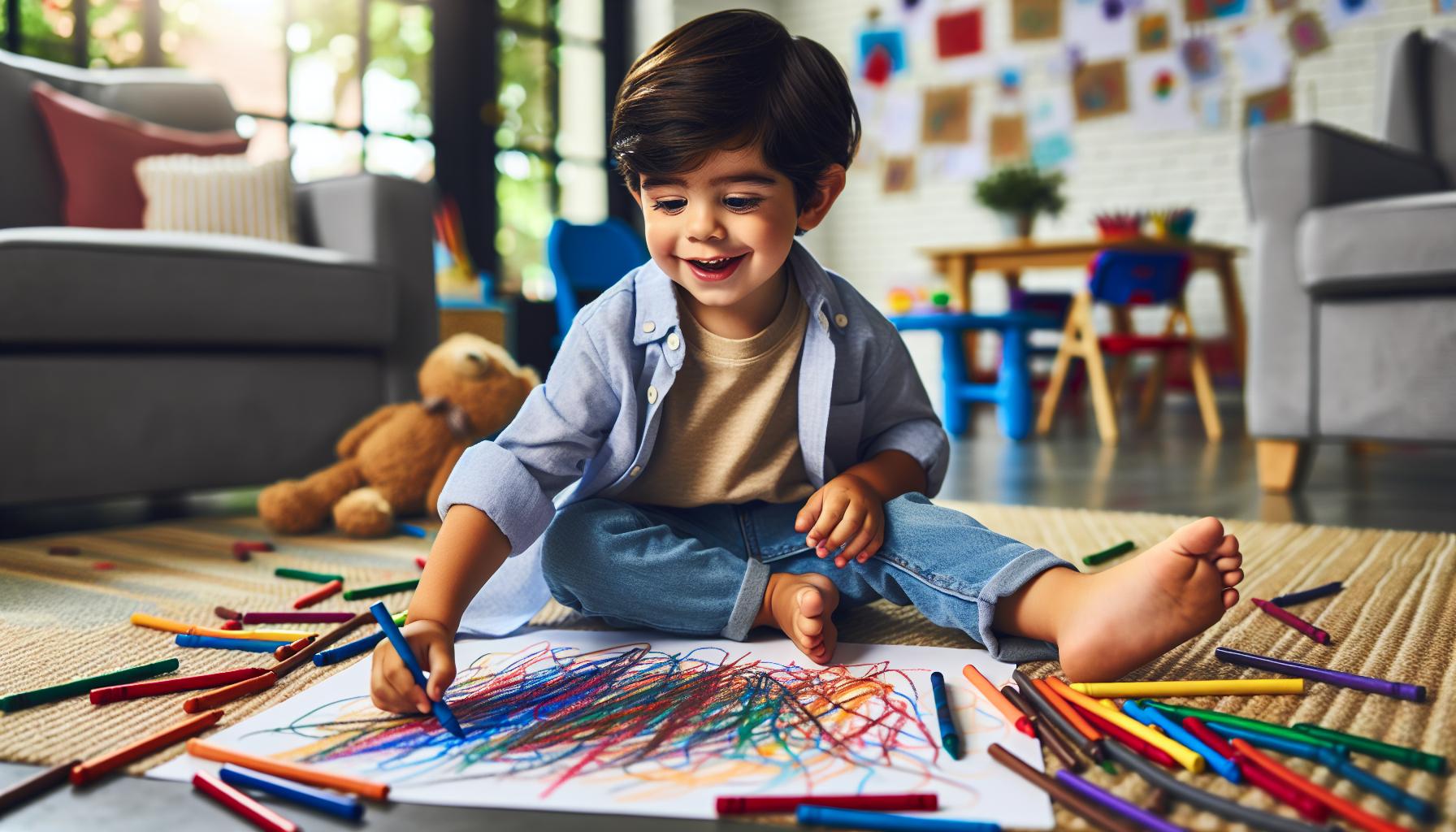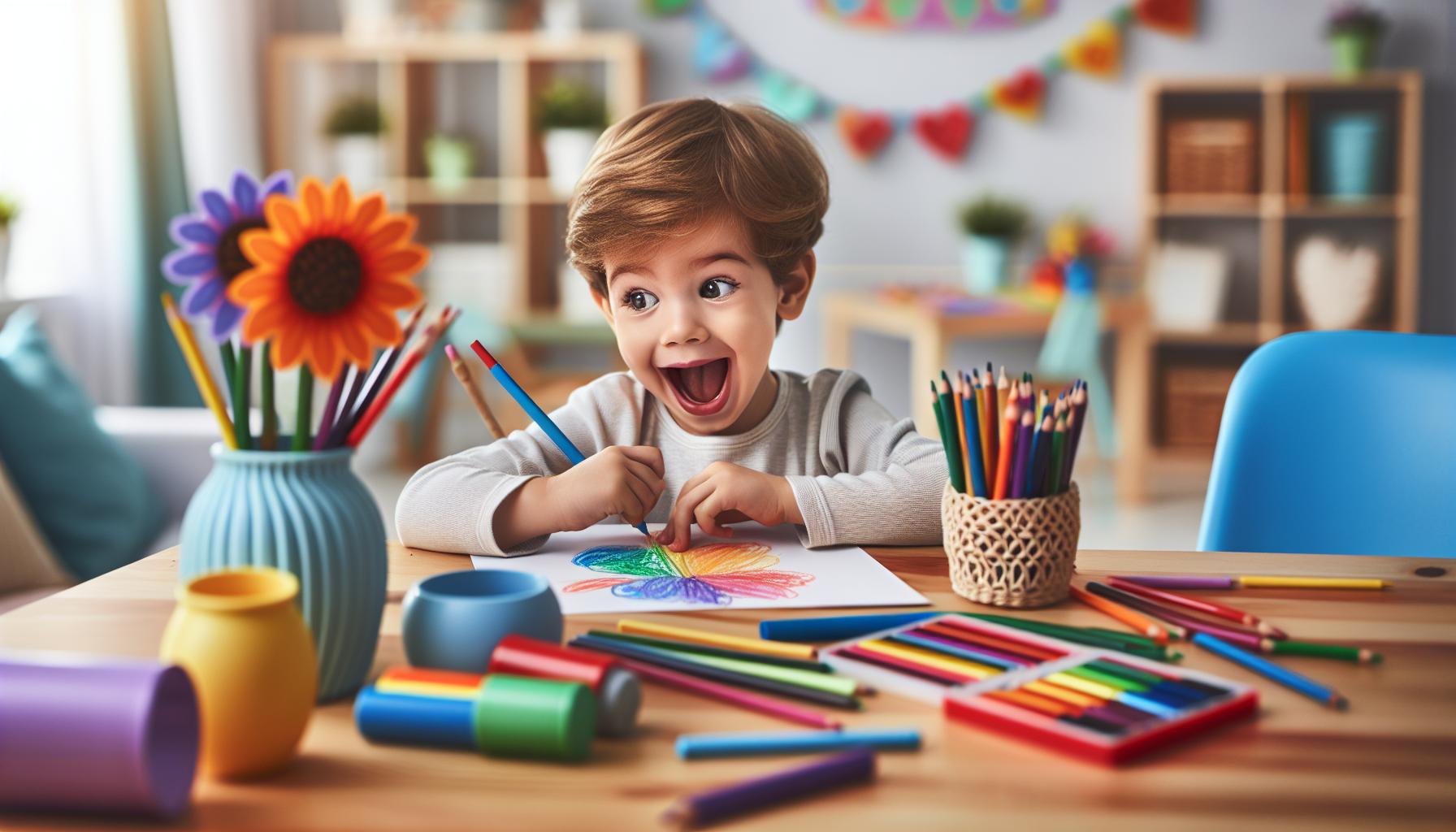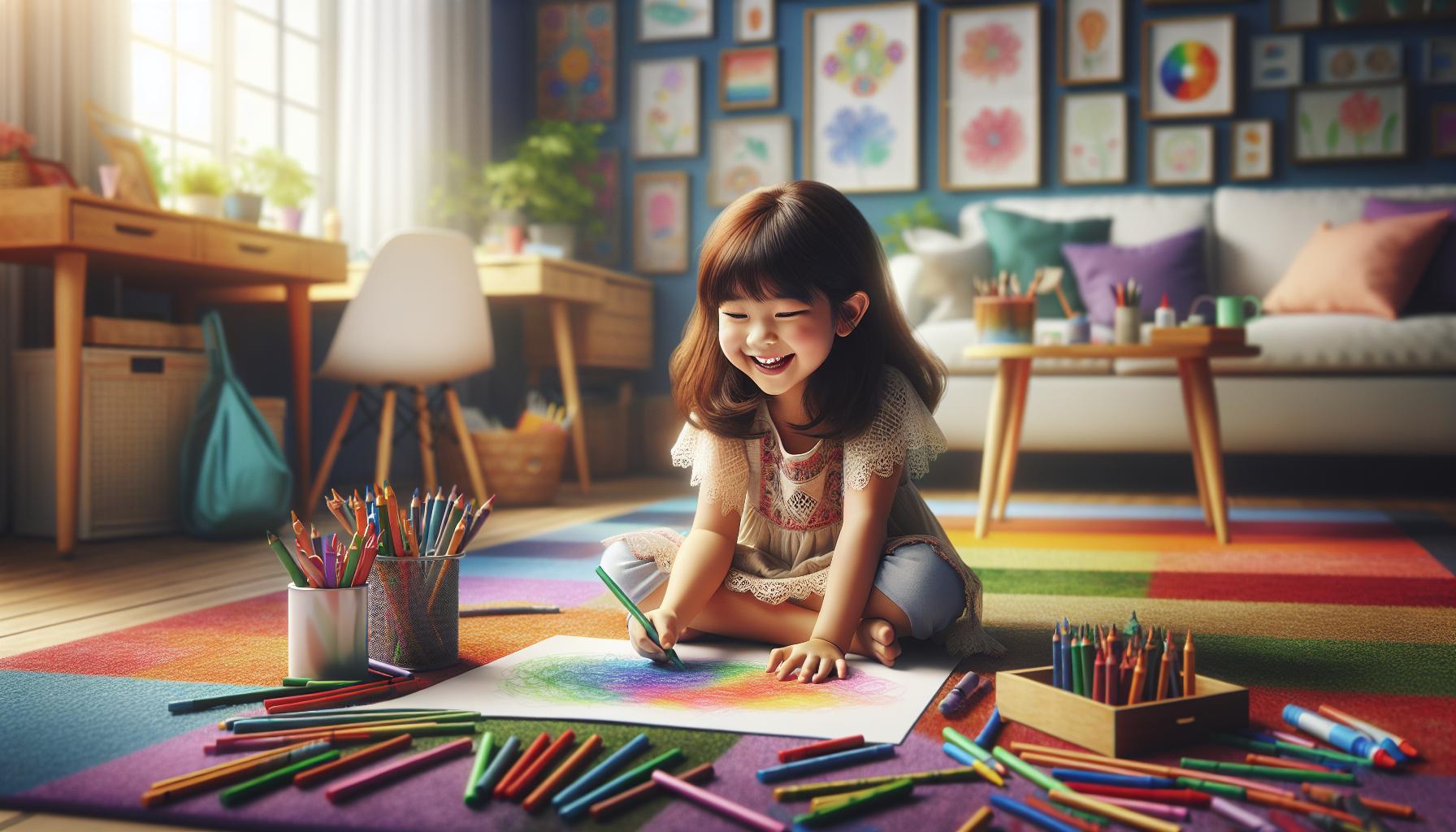Drawing is a powerful tool in child development, offering a unique window into a child’s mind. As children pick up crayons and paper, they embark on a journey of self-expression and creativity that shapes their emotional and cognitive growth. Through the simple act of drawing, kids can communicate feelings and ideas that words often can’t capture.
Moreover, drawing fosters essential skills like fine motor coordination and spatial awareness. As they learn to manipulate tools and explore colors, children enhance their hand-eye coordination and problem-solving abilities. Understanding the significance of drawing in a child’s development not only enriches their learning experience but also empowers parents and educators to nurture their creativity effectively.
Key Takeaways
- Drawing as a Developmental Tool: Drawing is a vital component of child development, enhancing emotional expression and cognitive growth while serving as a unique medium for children to communicate their thoughts and feelings.
- Stages of Drawing Development: Children progress through distinct stages of drawing, including Scribbling, Pre-Schematic, Schematic, and Realistic stages, each reflecting their evolving understanding of shapes, proportions, and representational skills.
- Benefits of Drawing: Engaging in drawing activities supports emotional expression, promotes cognitive skills like problem-solving, and helps develop fine motor skills crucial for later academic success.
- Role of Parents and Educators: Parents and educators can significantly influence children’s artistic growth by providing diverse materials and structured drawing activities that encourage creativity and exploration.
- Encouragement Techniques: Effective techniques to foster drawing include offering a variety of creative materials, guided drawing activities, and collaborative projects that enhance both skill development and creative expression.
- Improving Emotional Well-Being: Drawing not only aids in cognitive and motor skill development but also serves as a means for children to explore their identity and effectively manage their emotions, promoting overall emotional health.
Child Development Drawing
Child development drawing encompasses various stages that reflect children’s cognitive and emotional growth. Drawing activities contribute to a child’s ability to express feelings, explore creativity, and improve essential skills.
Stages of Drawing Development
- Scribbling Stage: Children aged 15 months to 3 years engage in spontaneous, uncontrolled scribbling. This early form of mark-making allows children to experiment with movement and surface without expectation.
- Pre-Schematic Stage: Between ages 3 and 4, children begin creating shapes and recognizable symbols. They often depict objects from their environment, shifting toward representational drawing.
- Schematic Stage: Occurring from age 4 to 7, children develop the ability to create more structured drawings. They establish a basic understanding of proportions and spatial relationships in their artwork.
- Realistic Stage: Post age 7, children start to refine their skills, focusing on details and accuracy. Their drawings reflect an understanding of perspective and more complex concepts.
Benefits of Drawing in Child Development
- Emotional Expression: Drawing enables children to convey thoughts and feelings they might not verbalize, aiding in emotional regulation and confidence.
- Cognitive Growth: Engaging in drawing activities fosters problem-solving skills as children plan and execute their artistic ideas.
- Fine Motor Skills: Manipulating drawing tools enhances dexterity and coordination, vital for later academic tasks such as writing.
- Creativity: Drawing promotes imaginative thinking, encouraging exploration and innovation in ideas and concepts.
Role of Parents and Educators
Parents and educators play a crucial role in facilitating drawing activities. Providing access to diverse materials, such as crayons, markers, and paper, encourages experimentation. Guidance and positive reinforcement further enrich the child’s drawing experience, nurturing their natural creative instincts.
Through supportive environments, parents and educators can significantly impact children’s artistic journeys, which contribute to their overall development.
Stages Of Child Development Drawing

Child development drawing progresses through distinct stages, each showcasing specific skills and characteristics. Understanding these stages aids in recognizing children’s artistic growth and development.
Early Childhood Drawings
Early childhood drawings span from 15 months to 4 years. In the Scribbling Stage (15 months to 3 years), children engage in spontaneous mark-making. They explore textures and colors, expressing themselves through energetic scribbles. During the Pre-Schematic Stage (ages 3 to 4), children start creating recognizable shapes, such as circles and lines. Their drawings reflect the world around them, often including simple figures with distinct body parts, like heads and limbs. This stage marks the beginning of symbolic representation.
Middle Childhood Drawings
Middle childhood, ages 4 to 12, encompasses the Schematic Stage (ages 4 to 7) and continues to the more advanced stages. In the Schematic Stage, children develop more structured drawings. They create scenes and demonstrate an understanding of proportions, typically featuring a mix of shapes that represent objects or figures. As they progress into the Linear Perspective Stage (ages 7 to 12), children focus on more detailed representations, incorporating depth and perspective. Their artwork becomes increasingly complex, showcasing an expanded imagination and a deeper understanding of spatial relationships.
Adolescent Drawings
Adolescent drawings, ages 12 and up, enter the Realistic Stage. Teens refine their artistic skills, emphasizing detail and accuracy. Their drawings represent a blend of realism and personal style, often reflecting their identity and emotions. Adolescents may experiment with various techniques and mediums, exploring new forms of expression, such as abstraction or surrealism. This stage marks a significant increase in artistic sophistication, as they develop a clear voice in their artwork and self-expression.
Techniques To Encourage Child Development Drawing

Encouraging child development drawing involves providing the right materials and structured activities. These techniques can enhance a child’s creative expression and skill development.
Creative Materials
Creative materials play a crucial role in fostering drawing experiences. Offering a variety of tools allows children to explore their creativity. Examples include:
- Crayons: Crayons foster early mark-making skills and offer vibrant colors.
- Markers: Markers encourage bold strokes and fine details.
- Colored Pencils: Colored pencils provide control and precision for detailed work.
- Watercolors: Watercolors introduce children to blending and layering techniques.
- Chalk: Chalk promotes outdoor creativity, allowing for large-scale drawings.
Having diverse materials encourages experimentation and ignites children’s imagination.
Guided Drawing Activities
Guided drawing activities support skill development while allowing creative exploration. Implementing structured activities leads to improved focus and engagement. Some effective activities include:
- Step-by-Step Drawing: Provide simple instructions for drawing recognizable objects, enhancing confidence.
- Themed Drawing Prompts: Introduce specific themes, such as animals or nature, to inspire unique creations.
- Collaborative Projects: Encourage group drawing sessions where children can contribute to a larger piece, fostering teamwork.
- Story-Driven Art: Combine storytelling with drawing by having children create illustrations for their favorite stories.
- Technique Instruction: Teach basic techniques, such as shading and perspective, to enhance their artistic skills.
These activities not only foster artistic growth but also promote fine motor skills and cognitive development.
Importance Of Child Development Drawing

Drawing significantly influences child development by enhancing cognitive skills and facilitating emotional expression. Engaging in drawing activities nurtures various aspects of a child’s growth, supporting their overall development.
Cognitive Benefits
Drawing contributes to cognitive development through improved problem-solving skills and enhanced spatial awareness. It provides opportunities for children to think critically, make decisions, and experiment with different concepts. Moreover, drawing strengthens fine motor skills, necessary for writing and other tasks. Studies show that children who engage in consistent drawing activities demonstrate advanced cognitive abilities compared to peers. Additionally, drawing encourages creativity, allowing children to visualize and plan their ideas, which fosters innovative thinking.
Emotional Expression
Drawing serves as a powerful tool for emotional expression in children. It enables them to convey feelings and thoughts they might not articulate verbally. By expressing emotions through art, children gain insight into their feelings, which assists in emotional processing. Research indicates that artistic activities reduce anxiety, promote self-esteem, and improve mood. Furthermore, drawing allows children to explore their identity and communicate their experiences, fostering resilience and emotional intelligence. Encouraging drawing activities can significantly enhance children’s emotional well-being.
Vital Role In A Child’s Development
Drawing plays a vital role in a child’s development. It nurtures creativity and self-expression while enhancing cognitive and emotional growth. Engaging in drawing activities not only improves fine motor skills but also fosters critical thinking and problem-solving abilities.
Parents and educators can significantly influence this journey by providing diverse materials and supportive environments. Encouraging exploration through various drawing techniques helps children build confidence and resilience.
Ultimately, drawing is more than just a fun activity; it’s a powerful tool that shapes a child’s identity and emotional well-being. By prioritizing drawing in early childhood, caregivers can help cultivate a generation of creative and emotionally intelligent individuals.